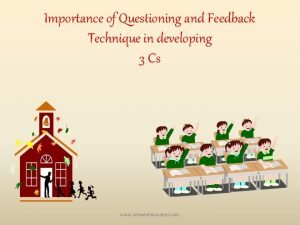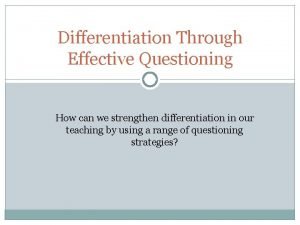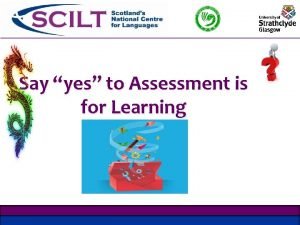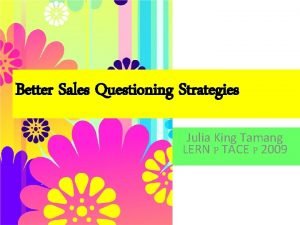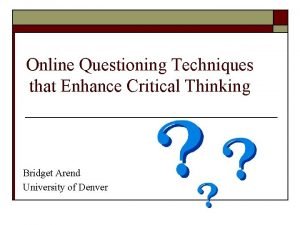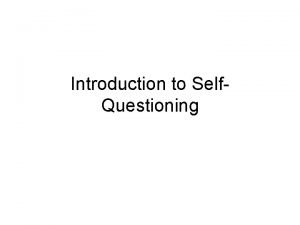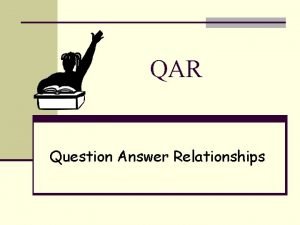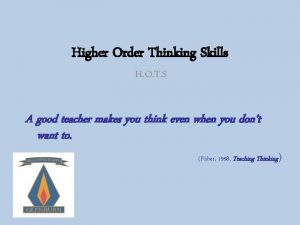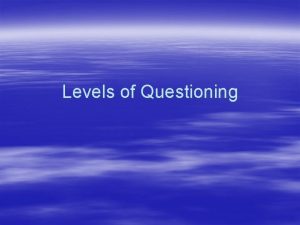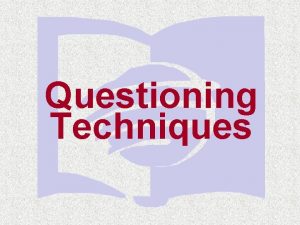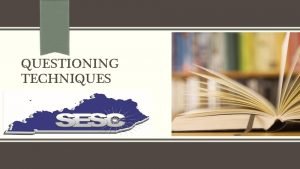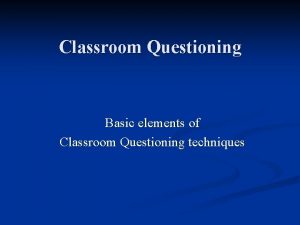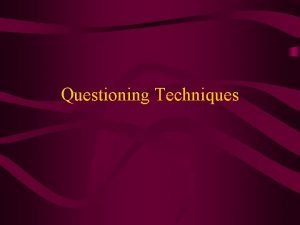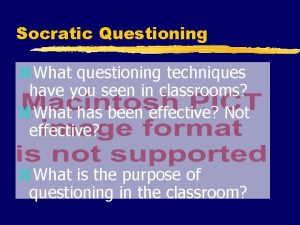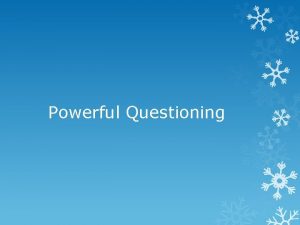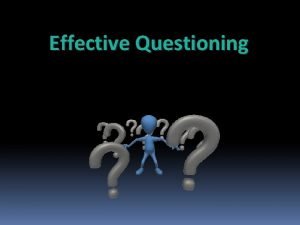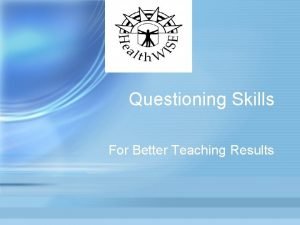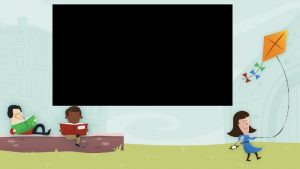Questioning techniques Questioning Techniques Questioning techniques are useful
















- Slides: 16


Questioning techniques

Questioning Techniques Questioning techniques are useful to assess a customer’s needs. These are used at the start of a service, during the service and at the end of a service. • Open questions – used to gain information and get the customer talking. • Closed questions – used to gain commitment and confirm information. • Probing questions – used to establish specific requirements

Open Questions Used when a simple “yes” or “no” is not enough. An extended answer is needed to the question – WHAT? WHEN? WHY? WHERE? HOW? Used to build a rapport through discussion – consultation. Wealth of information can be provided. The customer details several features/benefits – can match to products.

Closed Questions Typical “yes”, “no” or single word answers. Used to gain information on - suitable product features Identify specific customer wants and needs Good to close a sale or confirm information DO, CAN, COULD, DOES, WILL, SHALL, SHOULD, HAVE, MAY, DID.

Probing Questions Used to establish specific requirements – product features - price range Clarifies customers likes, dislikes and needs Allows product recommendation Usually follows open questions

Questions Examples of questions used to establish sales opportunities • When do you require the product? • What can you tell me about the product you desire? • What is your price range? • Will you be purchasing the product today?

Product knowledge Competence and Accuracy Customer trust Competitive edge Confidence Up-to-date product knowledge Customer satisfaction Objections

Up-to-date Product Knowledge Methods for maintaining up-to-date product knowledge: • Internal/external training events and courses • Product manuals and specifications • Marketing literature • Testing and practical use of products • Consumer tests • Reports and reviews

Closing the Sale Buying signals: • Customer body language • Customer returning to product • Customer reading product information and leaflets • Asking specific product questions • Handling the products • Trialling the product

Closing the Sale Ways of closing the sale: • Questioning the customer • Overcoming resistance • Incentives and discount • Reassurance in the product • After sales service • Returns policy





 Mikael ferm
Mikael ferm Questioning and discussion techniques
Questioning and discussion techniques Importance of questioning techniques
Importance of questioning techniques 3b using questioning and discussion techniques
3b using questioning and discussion techniques Differentiated questioning techniques
Differentiated questioning techniques Aifl strategies
Aifl strategies Using questioning and discussion techniques
Using questioning and discussion techniques Sales questioning techniques
Sales questioning techniques Pose purposeful questions
Pose purposeful questions Questioning stance
Questioning stance Hots activity
Hots activity Questioning images
Questioning images Virtual questioning skills
Virtual questioning skills Self introduction for students in school
Self introduction for students in school What is qar
What is qar Exploratory design
Exploratory design Higher
Higher


